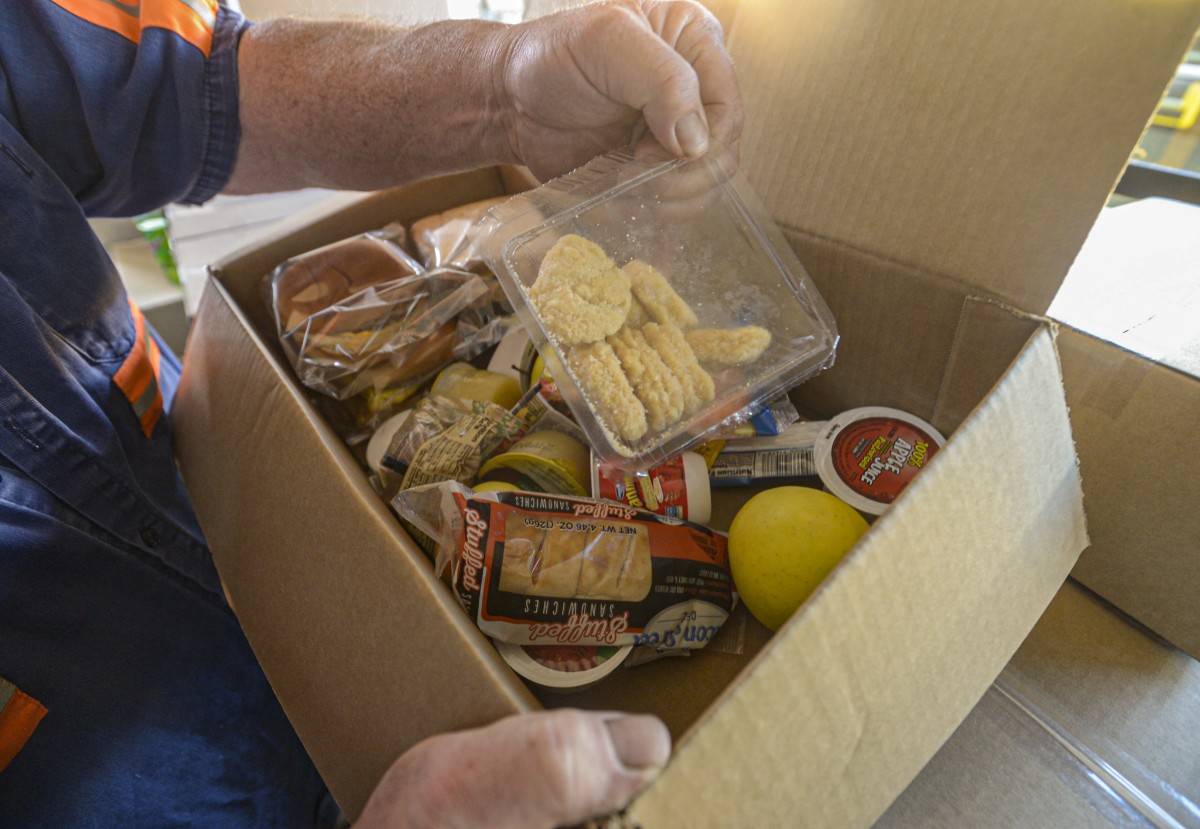In her forthcoming book, Rx Appalachia: Stories of Treatment and Survival in Rural Kentucky, Lesly-Marie Buer focuses on women’s encounters with substance use treatment in rural Central Appalachia. Buer is an applied medical anthropoligst and director of Research at Choice Health Network Harm Reduction in Knoxville, Tennessee.
In her own words, Buer says, “my work and research examines how state and non-state actors intervene in people’s lives based on shifting understandings of place, gender, ethnicity, class, drug use, and sexuality. Documenting how people navigate state policies, socioeconomic inequalities, and networks of relatedness in Appalachia contests depictions of people who use drugs or Appalachians as helpless victims or creators of some moral crisis.”
Below is an excerpt from Rx Appalachia, which will be released Tuesday, May 12.
***
“I’ve learned something about times like these. In times like these you have to grow big enough inside to hold both the loss and the hope.” – Ann Pancake, Strange as This Weather Has Been
Few families are untouched by drug use. My story with use begins before I was alive with an East Tennessee funeral. Two more funerals keep me working on substance use and harm-reduction issues. I am one step removed from these overdose or suicide deaths – it is hard to know the difference at times. I am a few steps removed from many more. I have never lost a parent, sibling, partner, or child to either of these causes, and I hope with all my might I never will. These two feelings, loss and hope, permeate my writing.
I learned about substance use before the Drug Abuse Resistance Program (D.A.R.E) presentation in middle-school. I came across an obituary in an old family trunk that elicited a more in-depth explanation of alcohol use than one could ever find in school. I then viewed, and still do at some moments, drug use as a thing that takes people away. Through ordinary experimentation in high school and college, I came to understand use as something that can also bring people together in both conventional and radical ways. I passed this stage of life without incident. Some of those around me were not so privileged. I keep returning to this disparity. Why am I okay? Why are some of my friends trapped in the criminal processing system? Why are others dead? The work that follows is not a testament to personal will but rather an exploration of how people get caught up in systems, especially state programs, and what happens when they do. Getting caught has far more to do with societal understandings of human worth than individual action.
***
The poor have been reductively framed as dependent, immoral, irresponsible, threatening, and thus unworthy of welfare.[1] Welfare reform targets poor mothers and Black mothers whose caretaking responsibilities and marginal status in the workforce are no longer seen as legitimate reasons for their entitlement to state services.[2] Those in the fringes are expected to survive through their care networks, which include those people who provide material and emotional resources as well as labor to one another, but not necessarily on equitable terms.
The elite generally do not react against brutality in meaningful ways until it occurs among the privileged,[3] hence the softer rhetoric surrounding prescription opioids, which are characterized as ethnically white and middle-class. Historically, social welfare programs have focused most resources on white working males and their families.[4] Even if policy makers have deemed some populations worthy enough to receive at least minimal social services, the provisions of these services subject people to intense surveillance. This surveillance may include urine- and blood-sampling testing, home and work visits, and electronic monitoring. With limited resources, organizations depend on eligibility requirements. These requirements are often based on funding streams. People must participate in claims of eligibility where they perform in a series of roles. They must be victimized enough to need services, but adequately personally responsible to justify the use of resources. These performances are rooted in understandings of Appalachia that stereotype the region as ethnically white and thus racially privileged, but also as a region that is under suspicion for its poverty.
Determinations of eligibility and worthiness often go beyond one identifier. While most of the people I spoke with are white, programs are available to them not because their lives are portrayed as worthy but because their white children’s lives are worthy. The people in these programs are intrusively managed, but, in terms of funding, barely addressed. If people do not have child custody, they might die or just barely survive because their entitlements to resources such as substance use treatment, health care, housing, and food are drastically cut or eliminated. Thus, access to services is tied to whether people are seen as fulfilling their caretaking roles as mothers to white children.
Three substance use treatment options are available in the area of Eastern Kentucky where I completed my research. All are government funded and regulated. Because of the perceived unique relationship between women and children, women who use drugs have increased access to substance use treatment in this place. Women who are pregnant or are mothers of young children qualify for services. One program primarily serves women who have child protective services cases and programming is focused on parenting. “Number of drug-free babies” is an outcome measure of Kentucky drug courts and reflects the prioritization of admitting pregnant women into the program.
Ashley’s history reveals how state resources can be gained and lost as relationships change. When women are no longer pregnant, services disappear. Ashley lost access to methadone: “It was right after my daughter was born, and I couldn’t pay for the methadone. Legally, they can’t take you off of it when you’re pregnant because it can kill your kid, but as soon as I had my baby, they tapered me down five milligrams a day. I got sick as a dog.” Some of these programs make clear that the primary client being served is the fetus or newborn, not the adult.
When Ashley had custody of her kids, who both have developmental delays, she received more than $1,400 a month in disability. The funds paid for their housing, transportation, and some food. When she lost custody, her children’s father began receiving the disability and she was also disenrolled from Temporary Assistance for Needy Families (TANF) assistance. Her car was repossessed because she could no longer make payments. With her children, Ashley qualified for $511 in Supplemental Nutrition Assistance Program (SNAP) benefits, but without them she qualifies for $194, which does not quite cover her food for the month.
Social services’ focus on serving children and on surveilling and disciplining adults leads to harmful physical and mental health outcomes, as Ashley demonstrates:
I lived in a homeless shelter for about nine months, me and my son did. I was pregnant with my daughter. There was no air conditioning for like three weeks. It would get to like 109 degrees in there. You had to do chores and I actually went into labor because they had me mopping the stairway.
Therapeutic and parental goals can conflict when treatment programs are embedded within the child services system. In our first interview, Ashley said that you have to be “smart” about what you say in treatment, but you still want to be “open and honest”:
You don’t want to say something and have them get wind of it and them see it the wrong way. And then you don’t get your kids back. These people have control over whether you have your kids or not. So you just gotta be smart about stuff…I’m still open. I’ve always been an open and honest person. Secrets don’t make friends and you know secrets end up eating at you.
Although she described the treatment program positively in our first interview, by the time we got to our second interview four months later, Ashley was frustrated. She felt disconnected from the staff because she thought they had told child protective services about issues that arose in individual counseling sessions that they should not have. She knew the treatment program had to report her reactive drug screens to child services, but she did not know treatment staff would report that Ashley was injecting her physician-prescribed buprenorphine. Since Ashley’s children were not in her custody and lived hours away, her injection of buprenorphine could hardly pose harm to her children. With this report, she became reticent in class, speaking only when necessary. When I asked her a second time to identify the most helpful thing about treatment, she said the free lunch every day.
The treatment program Ashley went to was created to reform mothers who use drugs and are at risk of losing child custody. Like many programs before it that focused on altering Appalachian mothers through education, there is much talk of parenting without much support of caretaking. Staff often do what they can, but their actions are stifled by funding streams, program policies, and societal acceptance of particular social service and public health programs. At times, staff themselves stigmatize mother who use drugs. Sometimes staff make mistakes. From what I saw, most administrators and staff members try to be empathetic and to offer an alternative to drug treatment outside of criminalization.



